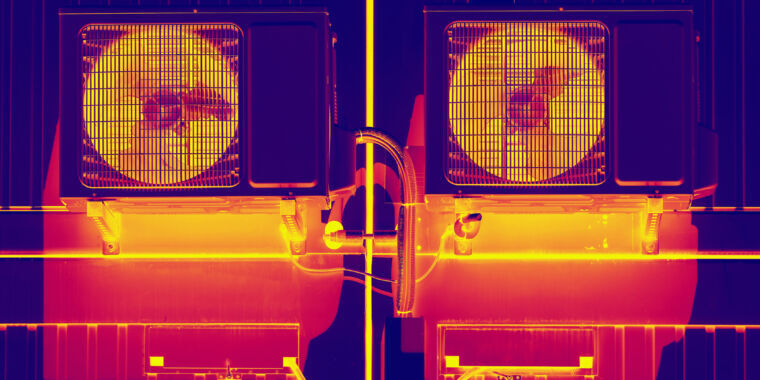Nine states are teaming up to accelerate adoption of this climate-friendly device.
Death is coming for the old-school gas furnace—and its killer is the humble heat pump. They’re already outselling gas furnaces in the US, and now a coalition of states has signed an agreement to supercharge the gas-to-electric transition by making it as cheap and easy as possible for their residents to switch.
Nine states have signed a memorandum of understanding that says that heat pumps should make up at least 65 percent of residential heating, air conditioning, and water-heating shipments by 2030. (“Shipments” here means systems manufactured, a proxy for how many are actually sold.) By 2040, these states—California, Colorado, Maine, Maryland, Massachusetts, New Jersey, New York, Oregon, and Rhode Island—are aiming for 90 percent of those shipments to be heat pumps.
“It’s a really strong signal from states that they’re committed to accelerating this transition to zero-emissions residential buildings,” says Emily Levin, senior policy adviser at the Northeast States for Coordinated Air Use Management (NESCAUM), an association of air-quality agencies that facilitated the agreement. The states will collaborate, for instance, in pursuing federal funding, developing standards for the rollout of heat pumps, and laying out an overarching plan “with priority actions to support widespread electrification of residential buildings.”



Thanks. My climate is relatively mild so I don’t think resistance heating will be necessary. Extreme lows could get to the low 20’s but only for brief periods, so I think heat pumps should still work in such conditions?
Our heat pump didn’t really kick in the resistive auxiliary heat until temps were well below 0°F, but humidity also plays into that. It wasn’t ever running the resistive heat exclusively.
If sized correctly, heat pumps also don’t really like setbacks in the winter. Just set the thermostat to whatever and leave it – don’t have it cool down at night and warm back up in the morning.
I like to be warm at night anyway so I don’t have a problem with that.